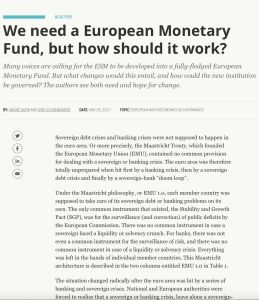Join getAbstract to access the summary!

Join getAbstract to access the summary!
André Sapir and Dirk Schoenmaker
We need a European Monetary Fund, but how should it work?
Bruegel, 2017
What's inside?
A European Monetary Fund could help manage future euro crises.
Recommendation
Over time, banking and sovereign debt crises have laid bare the original design flaws in the European Monetary Union (EMU), which sorely needed a blueprint to guide the region through financial tumult. According to this cogent essay by economists André Sapir and Dirk Schoenmaker, a transformation of the European Stability Mechanism – by expanding its responsibilities and reforming its governance – into a European Monetary Fund would help close gaps in the EMU edifice. getAbstract recommends this succinct but innovative text to policy analysts and experts.
Summary
About the Authors
André Sapir and Dirk Schoenmaker are economists with Bruegel, a European think tank.


















Comment on this summary